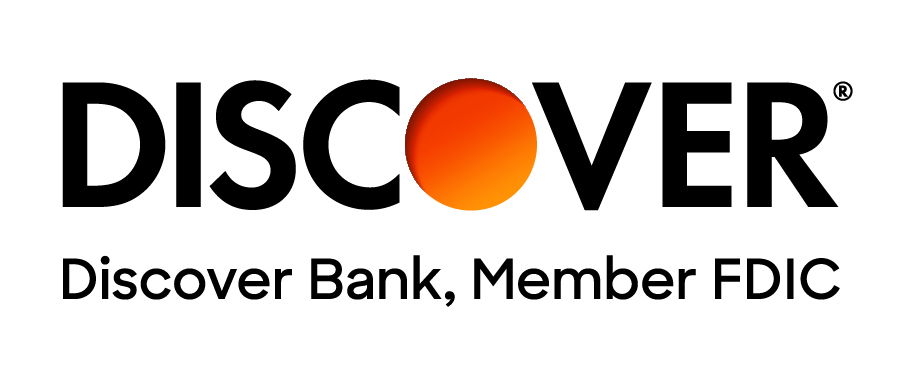Debt doesn’t define you—it’s often tied to life situations or not knowing enough about managing finances. The key to avoiding or handling debt is learning as much as you can, preparing for the future, and asking for help when necessary. Here are some typical situations where young adults might face debt:
- Student Loans: It’s not uncommon to go to college, and this often involves taking out student loans. With the rising cost of education, these loans can pile up quickly, creating a heavy financial burden.
- Credit Card Misuse: Sometimes when you are new to managing your own finances, you may fall into the trap of irresponsible credit card usage. High interest rates and the ease of "swipe now, pay later" can lead to mounting debt.
- Lack of Emergency Savings: Unexpected expenses like medical emergencies or car repairs can throw a wrench into even the most well-planned budget. Without an emergency fund, you may have to resort to borrowing money to cover these costs.
- Living Beyond Your Means: The desire to keep up with peers and societal pressure can lead to overspending on lifestyle expenses like dining out, travel, or shopping. This can lead to a cycle of debt if income doesn't support these spending habits.
- Limited Financial Literacy: Without a solid understanding of personal finance concepts like interest rates, budgeting, and investing, it could be easy to may make decisions that would lead to debt.
Understanding Your Debt
Understanding the intricacies of different types of debt like credit cards, student loans, and car loans is crucial because they can have a significant impact on your financial health. Here's a breakdown:
- Credit Card Debt: Credit cards can be useful financial tools if used responsibly. However, they come with high interest rates that can quickly accumulate if you don't pay off your balance in full each month. It's easy to fall into the trap of only paying the minimum required payment, but this means you're mostly just paying off the interest and not the principal, leading to a cycle of increasing debt.
- Student Loans: Education is an investment, and for many, student loans are a necessity. However, the cost of education has been rising, and many students take on substantial debt without fully understanding the long-term implications. Depending on the type of loan, interest starts accruing while you're in school, even if you're not required to make payments yet. This can result in a much larger balance by the time you graduate.
- Car Loans: Cars are often considered a necessity, but they depreciate over time, meaning their value decreases the longer you own them. When you finance a car with a loan, it's possible to end up "upside-down" or "underwater" on your loan, which means you owe more on the loan than the car is worth. This can be problematic if you want to sell the car or if it gets totaled in an accident. Additionally, car loans add to your monthly expenses, which can strain your budget, especially if the interest rate is high. Remember, the key to handling any debt is to fully understand the terms, make payments on time, and have a plan for paying it off. If you're feeling overwhelmed, consider seeking advice from a financial advisor.
Steps to Take to Get out of Debt
Step 1: Assess Your Financial Situation
Assessing your financial situation is the cornerstone of effective debt management. It's vital to have a clear understanding of your income, expenses, and the total debt you owe. Your income is the total amount of earnings you receive either from employment or through investing, and it sets the foundation for your budget plan. Your expenses, include everything from essential costs like food and housing to discretionary spending like entertainment. Your total debt is the sum of all outstanding obligations from credit cards, student loans, mortgages, and other liabilities.
Wondering how to monitor expenses effectively? Look no further. From budgeting apps that categorize your spending and offer real-time alerts to spreadsheets for a hands-on tracking method, there are various tools at your disposal.
Budgeting apps streamline expense tracking by linking to your accounts, while spreadsheets provide a detailed view of your finances with customized categories. Stay on top of your spending habits by regularly updating these tools to gain control and understanding of your financial flow.
If you feel you need help, consider consulting with a financial advisor. They can provide valuable insights into managing your finances and creating a repayment plan that suits your circumstances.
Step 2: Create a Budget
Creating a realistic budget is an integral step towards effective debt management. It provides a clear picture of your income and expenses, helping you to identify areas where you can cut back and save more. Here's how to do it:
- Identify Your Income: Start by listing all your sources of income. This could include your salary, bonuses, rental income, dividends, etc. Be sure to use your net income (after tax) for budgeting.
- List Your Expenses: Categorize your expenses into fixed and variable expenses. Fixed expenses are regular monthly bills like rent or mortgage, car payment, and insurance. Variable expenses include groceries, entertainment, travel, and other costs that might change from month to month.
- Compare Income and Expenses: Subtract your total expenses from your total income. If the result is a positive number, you're living within your means. If it's negative, you're spending more than you earn and need to make adjustments.
- Adjust Spending Habits: If necessary, find ways to reduce spending or increase income. This might involve cutting down on non-essential items, looking for ways to save on regular bills, or finding ways to supplement your income.
- Revisit and Revise: Your budget isn't a set-it-and-forget-it tool. It's something that should be regularly reviewed and adjusted to accommodate changes in your income, expenses, or financial goals.
If you need to cut your spending, there are several ways to trim unnecessary expenses and prioritize needs over wants. Start by eliminating non-essential items like dining out, cable TV, or unused gym memberships. Next, look for cheaper alternatives to your current expenses. For example, if you're spending a lot on groceries, consider shopping at a discount store or using coupons. Prioritizing needs over wants is all about distinguishing between what you need for survival and what you desire. This involves making conscious decisions and sometimes tough sacrifices, but remember, it's all part of the journey towards financial freedom.
Staying committed to your budget and making conscious decisions is a surefire way to achieve your financial goals and relieve debt.
Step 3: Prioritize Your Debts
Prioritizing your debts is an essential part of debt management. There are a couple of popular strategies you can consider:
- The Avalanche Method: This strategy involves making minimum payments on all debts each month, then using any remaining money to pay off the debt with the highest interest rate. Over time, this method can save you money on interest.
- The Snowball Method: Here, you still make minimum payments on all debts, but any extra money goes toward paying off the smallest debt first. This method can deliver quick wins, motivating you to stick with your debt repayment plan.
One size doesn't fit all, and you may need to decide which strategy works best for your personal circumstance. Some people need the motivation that comes from quickly paying off small debts, while others prefer the long-term savings of paying off high-interest debts first.
In some cases, debt consolidation can also be an effective way to manage multiple debts. It involves combining all your outstanding debts into one loan, ideally with a lower interest rate. This simplifies your payments and makes it easier to keep track of your debt.
However, it's important to note that debt consolidation is not a one-size-fits-all solution either. It can be beneficial if you have high-interest debts, a good credit score, and a plan to prevent future debt. On the flip side, if the consolidated loan comes with fees or a higher interest rate, or if it extends your repayment period and leads to more interest paid overtime, it might not be the right choice. Always consider your unique situation and consult with a financial advisor before making such decisions.
Step 4: Negotiate with Creditors
Negotiating with your creditors can be a strategic step towards debt relief. This process may seem daunting, but it's entirely possible with a bit of preparation and understanding.
- Approaching Creditors: Ideally, you should approach your creditors as soon as you realize you're having trouble making payments. Open communication early on can help avoid missed payments and negative impacts on your credit score. Initiate a conversation expressing your difficulty in meeting payments and your willingness to negotiate a payment plan that works for both parties.
- Negotiating Lower Interest Rates or Payment Plans: Be honest about your financial situation and ask if there's a possibility of reducing your interest rate or restructuring your payment plan to be more manageable. Creditors are often willing to negotiate because, ultimately, they want to recover as much of the debt as possible.
- The Role of a Debt Relief Specialist: A debt relief specialist can be instrumental in this process. They bring expertise in negotiating with creditors and can often secure more favorable terms than you might accomplish on your own. A specialist can help you develop a debt management plan, represent you in discussions with creditors, and provide advice on how to avoid future debt.
It is essential to ensure any changes are made official. Ask your creditor to provide a written agreement of any new terms you've negotiated. Lastly, be patient. Debt relief is not an overnight process but a journey requiring persistence, discipline, and resilience. Stay positive and committed, and you'll gradually make your way toward financial freedom.
Living within Your Means to Prevent Future Debt
Living within one's means is a fundamental principle of personal finance and a crucial strategy to avoid debt. Essentially, it entails spending less than you earn. This practice ensures that you can meet your essential expenses, plan for future financial goals, and most importantly, steer clear of the debt trap.
Here are some key strategies to help maintain a lifestyle within your means:
- Create and Stick to a Budget: A budget provides a clear picture of your income, expenses, and potential savings. It helps you understand where your money goes and how you can control it. It is the first step towards developing healthier spending habits.
- Save and Invest: Make saving a habit, even if it means starting with a small amount. Over time, these savings can grow and provide a financial cushion in case of unforeseen circumstances. Investing, on the other hand, allows your money to grow, creating an additional income stream.
- Avoid Unnecessary Debt: While loans and credit cards can be useful, they can also lead to a cycle of debt if not handled responsibly. Prioritize needs over wants and only borrow what you can comfortably repay.
- Emergency Fund: An emergency fund is a financial safety net that covers unexpected expenses such as medical bills, car repairs, or job loss. Having this fund helps avoid debt that might otherwise accrue due to these unexpected costs.
The goal is not to deprive yourself of enjoyment but to make mindful spending choices. It's about understanding the difference between needs and wants, and making decisions that positively impact your financial well-being both now and in the future. Financial freedom is a journey, not a destination, and every step taken towards responsible financial habits is a step closer to it.








